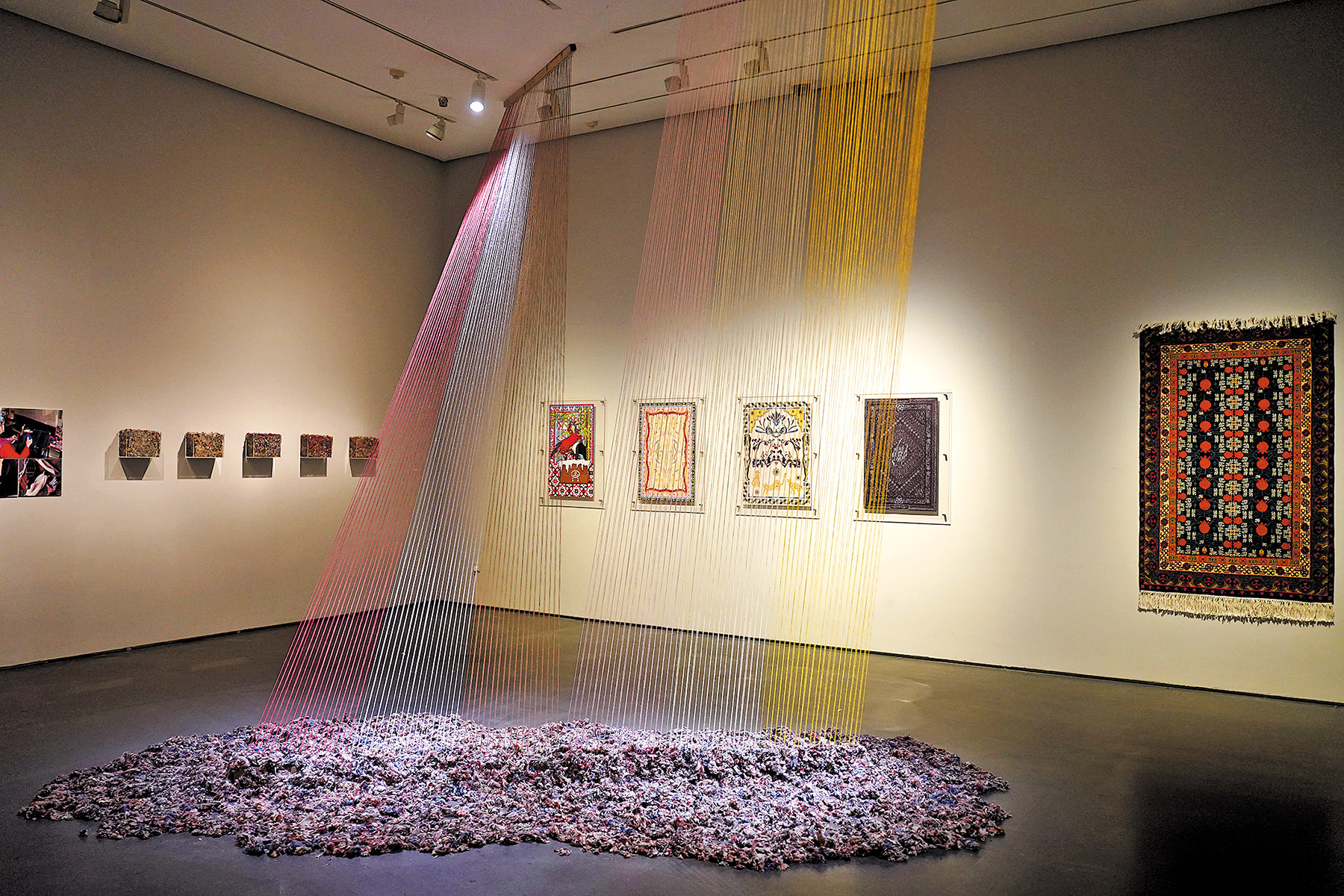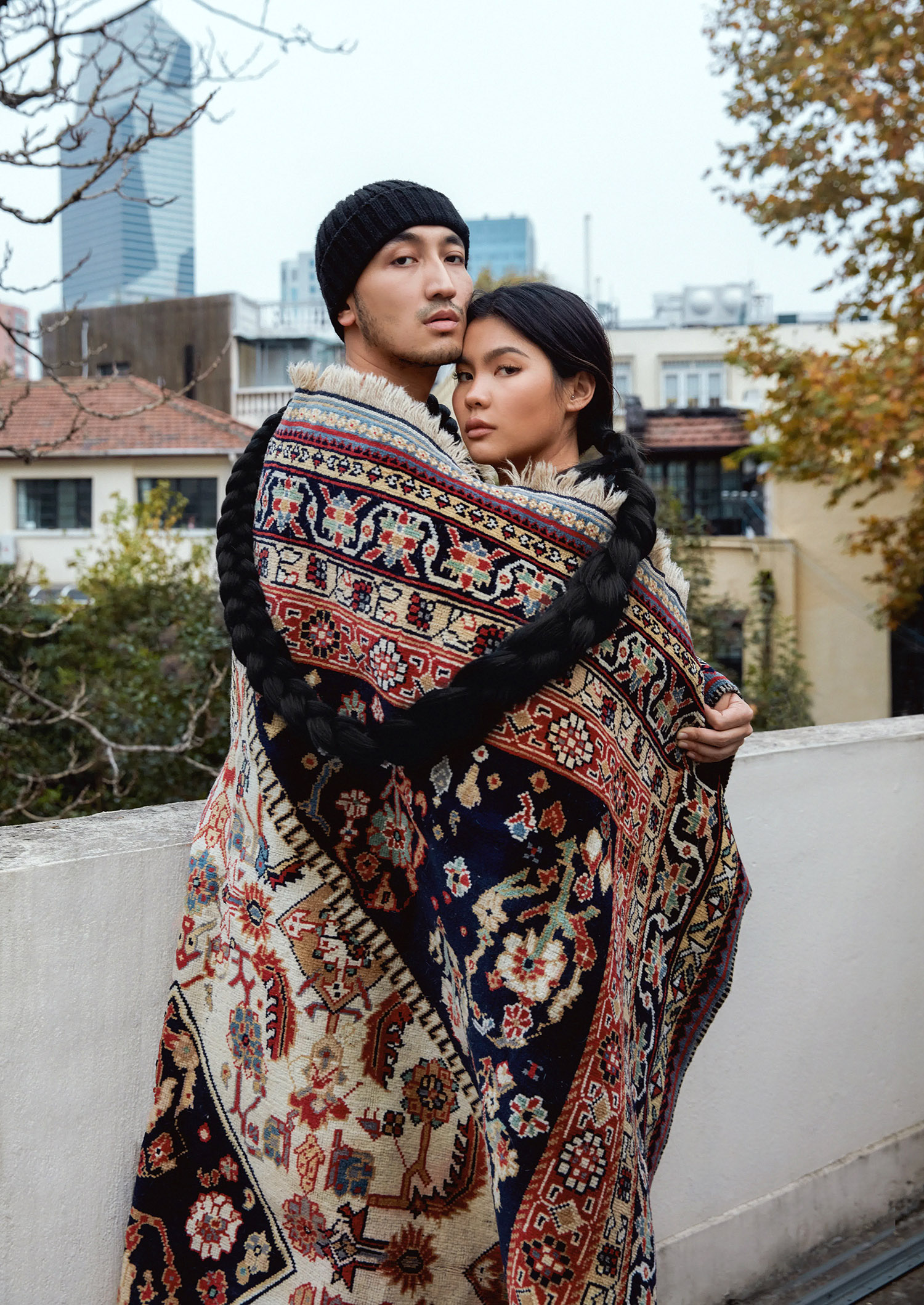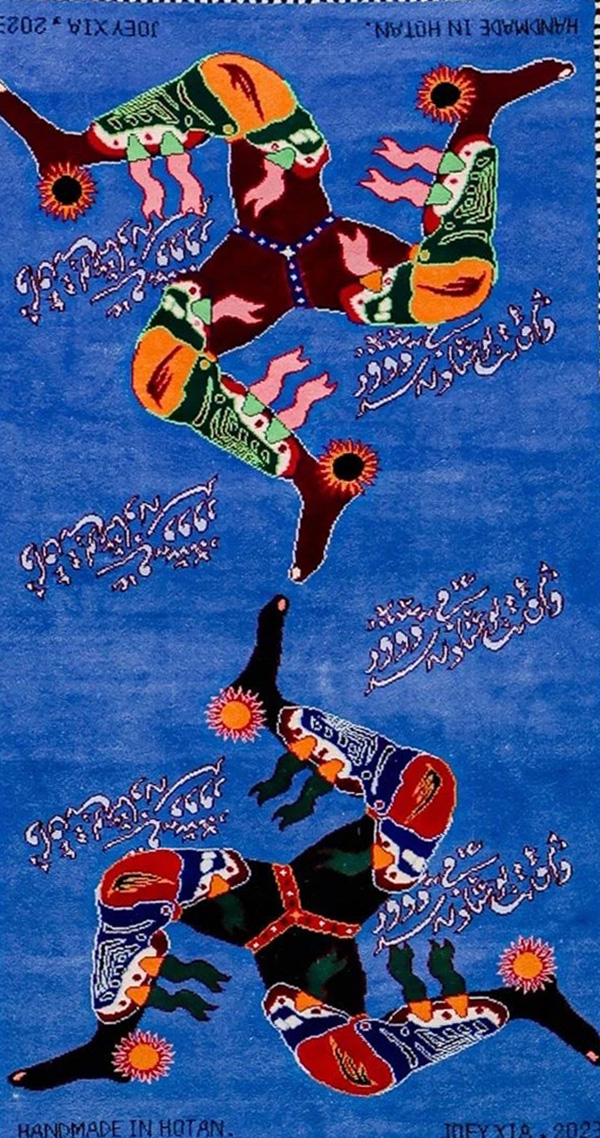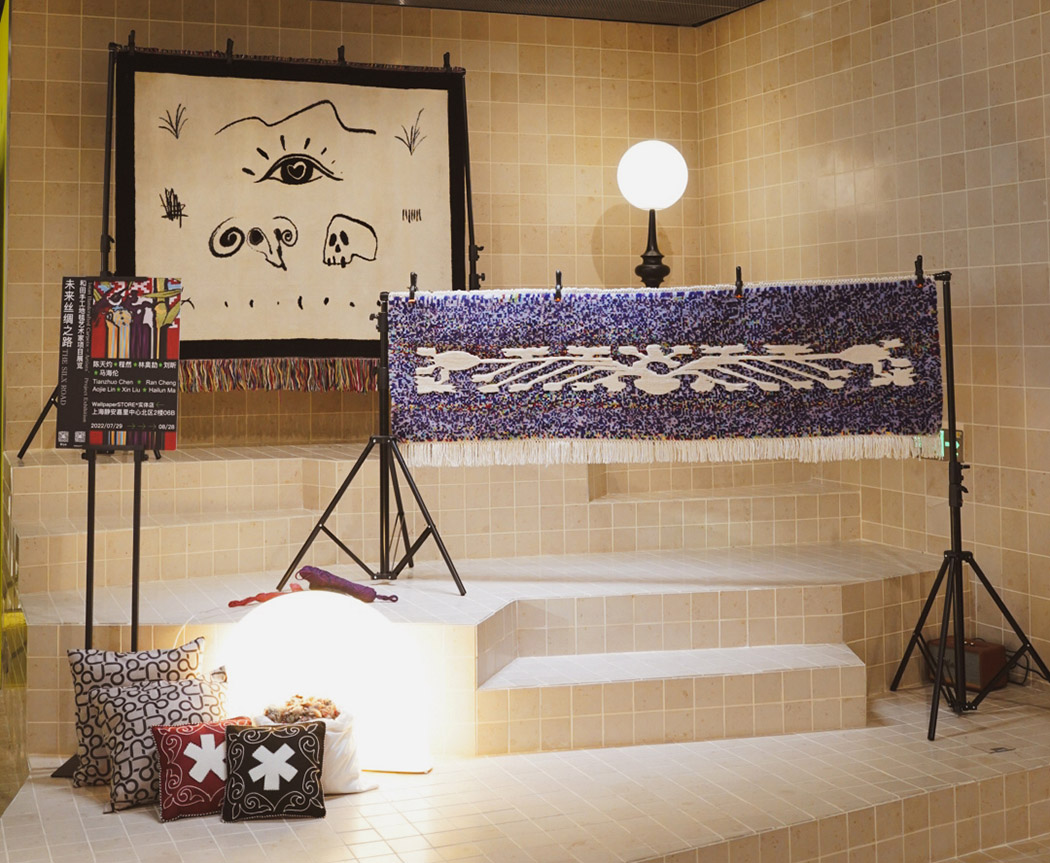
In 2010, Ma Hailun, then an 18-year-old middle school student, left Urumqi in the Xinjiang Uygur autonomous region to study in New York City.
Among her belongings was a handmade wool carpet measuring 1.2 meters in length and 80 centimeters in width, an item that reminded her of home, sweet home.
The piece was made from high-quality, durable wool, with intricate traditional patterns in a rich array of colors centered on shades of red. It was from her bedroom in Urumqi.
Xinjiang is one of the world's centers of carpet weaving, with archaeological findings tracing the art in the region back over 2,000 years.
"I feel that the carpet is an extension of Xinjiang," Ma says.
READ MORE: Weaving magic through determination
Following completion of her postgraduate studies in fashion photography at the School of Visual Arts, she returned to China and settled in Shanghai in 2018, where the red carpet still has a place in her studio.
Now as a photographer, who frequently focuses her lens on her hometown and its people, handmade carpets have become a recurring element in her work.
"Carpets give me a sense of being grounded. They bear the weight of life, much like a soft patch of land," she says.
"Growing up in Xinjiang, carpets are an integral part of my life, as familiar to me as any other piece of furniture."

The daughter of parents who worked at a television station, Ma's childhood was spent in a large courtyard that housed the station's employees, who were of different ethnic backgrounds. On hot, dry summer afternoons, she would sit with her family and neighbors on a carpet, eating watermelon, watching TV, and chatting.
If a family in the courtyard needed to clean their carpet, all the children would come together to help.
"We would use small knives to scrape the dust from it. The carpet holds many such memories for me about home and childhood," she says.
This is why, when she learned in 2021 that the Urumqi-based Gaotai Gallery was starting a project to introduce art to the carpet workshops in Hotan prefecture in Xinjiang to inspire new product development, she joined up without hesitation.
The gallery is seeking to introduce new ideas to traditional crafts, and participating artists are expected to breathe fresh life into the ancient craft through their designs, while also spreading word about the history and skill behind Hotan's handmade carpets.
"Through the innovative designs of the artists, our goal is to transform the public perception of Hotan carpets from being heavy and outdated, to being modern, finely crafted pieces that seamlessly combine strength and softness, with skill and creativity," says Ma Xing, curator of the gallery.
The artists involved in the first round made sketches, which were then brought to life on carpets by weavers in Hotan. The collaborations resulted in the creation of five designs that were later exhibited and made available for sale in limited quantities.

Ma Hailun named her design A Room of One's Own after British author Virginia Woolf's classic feminist novel.
She approached the carpet from the perspective of a photographer, retaining the traditional borders to frame it like a viewfinder. The focal point is on a young woman at ease in her own bedroom.
For her, the carpet symbolizes intimacy. Its soft, warm texture also feels feminine.
She views this as an innovation, given that traditional carpet patterns usually depict nature, landscapes and other macroscopic elements. She also made a deliberate choice to use baby pink and baby blue wools instead of the dark blue and red shades typical of Xinjiang carpets, with the intention of deviating from the traditional color scheme.
The weavers who brought her design to life in Hotan were all women.
"I really appreciate this female narrative. The carpet is interwoven with the stories of women from beginning to end," Ma Hailun says.
After this initial collaboration, she discovered that different weavers working from the same blueprint would produce finished carpets with subtle differences.

She plans to turn A Room of One's Own into a series by providing the women with uncolored sketches, and allowing them to interpret the colors for themselves and produce distinct carpets.
She will present them as collaborative pieces bearing both her name and those of the female artisans with whom she collaborates.
Joey Xia, a Shanghai-based artist, has been using a variety of materials to create artistic installations that explore themes like the reshaping of power structures, the construction of identity, and reflections on cultural diversity within the context of globalization.
A graduate of the School of the Art Institute of Chicago, Xia maintains a sensitivity to different materials. "I value the cultural information contained in the materials themselves," he says.
ALSO READ: Tibetan carpet sector weaves dreams
In 2022, when the aforementioned carpets were being sold at a pop-up booth at Tank Shanghai gallery, Xia stopped by and expressed his interest in Hotan carpets and later, applied to participate in the project's second phase.
"It was my first time seeing the process of hand-weaving carpets. I was shocked by how much time a person would spend on repetitive actions. I believe that this dedication infuses the weaver's energy into the making, giving the carpets special vitality," Xia says.
His design is based on his childhood image of a flying carpet, with a trident-shaped symbol representing the carpet's "engine" and the words "Time and space are imagination" written in Uygur.
He has been considering ways of incorporating carpets into his installations and exhibitions.
"As household items for nomadic people, I suppose that the carpet conveys a sense of urgency to go further in a globalized context," Xia adds.


